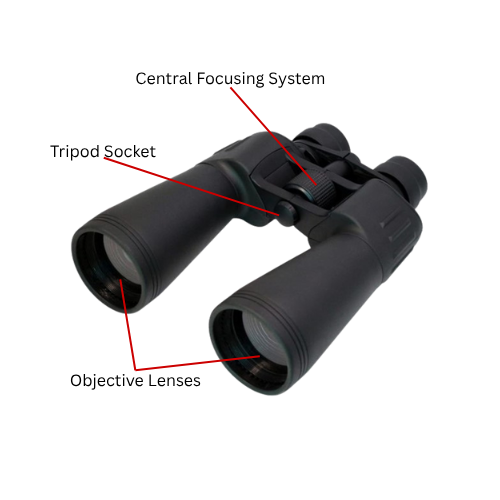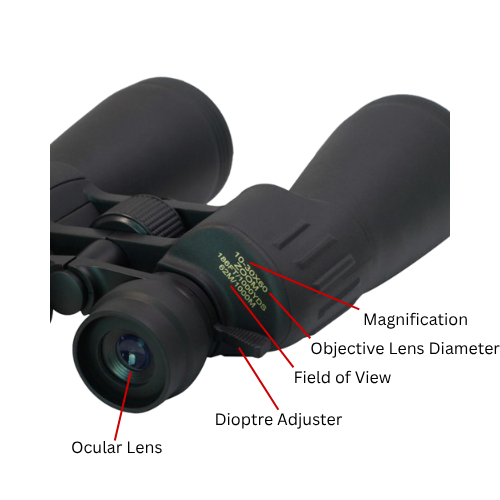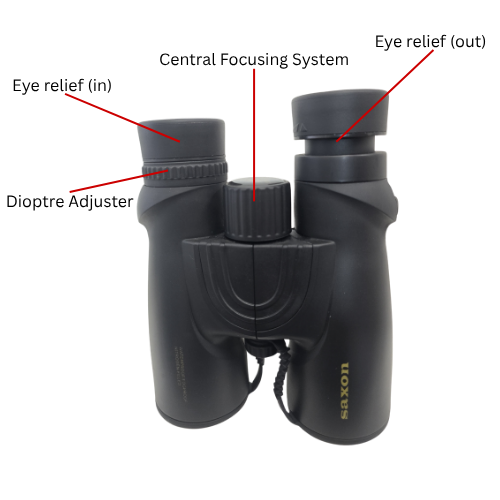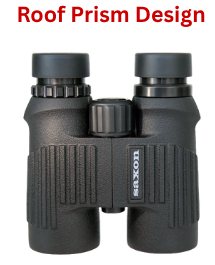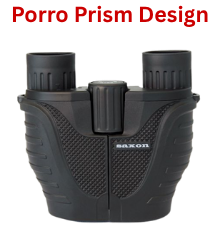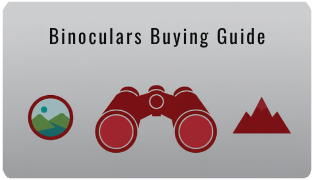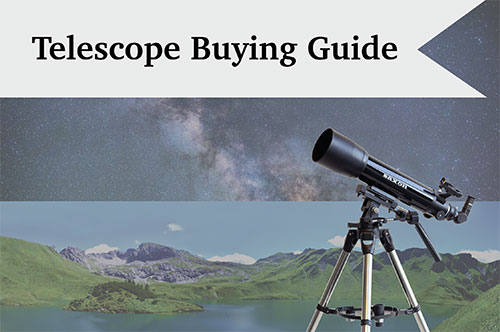Binoculars Buying Guide - How to Choose a Pair of Binoculars
So you want to buy a pair of binoculars
Buying binoculars can be straightforward once you understand the key specifications. With a wide variety of sizes, magnifications, and designs, knowing how each factor affects what you see will help you select the right pair for your needs.
Binoculars are versatile tools for birdwatching, travel, sports, outdoor adventures, marine use, and astronomy. The ideal model depends on your activity, viewing conditions, and personal comfort.
Understanding Binocular Basics
Magnification and Objective Lens Diameter
Binoculars are described by two numbers, such as 8x30.
- Magnification (8x): How many times closer an object appears,so when viewing through an 8x (times) magnification, the object will appear 8 times closer than with the naked eye.
- Higher magnification shows more detail but narrows the field of view, dims the image, and increases sensitivity to hand shakiness.
- Some binoculars have a zoom feature which can be identified by the hyphen in the magnification section. E.g. 10-30x60, which has a variable zoom from 10x to 30x and a 60mm objective lens diameter.
- Objective Lens Diameter (30mm): The size of the front lens, or the one closest to the object you are viewing.
- Larger lenses gather more light for brighter images, especially in low light, but increase weight and bulk.
Factors to consider together:
- Magnification, lens diameter, and prism type together determine image brightness, sharpness, and stability.
- Handheld use is more comfortable with moderate magnification and larger lenses for optimal brightness without excessive weight.
Field of View
- Definition: The width of the scene visible through the binoculars at a fixed distance, the FOV value is typically expressed in ‘metres’, and measured at 1,000 metres. For example, a specification of 83m/1000m means the FOV is 83 metres wide when viewed from 1,000 metres away.
- Impact: Wide FOV is ideal for tracking moving subjects like birds, athletes, or wildlife. Narrow FOV provides more detail on distant objects.
- FOV can vary greatly, even with the same specifications, so make sure to check the product description or manual for an accurate value!
Factors affecting FOV:
- Magnification: Higher magnification narrows FOV.
- Prism Design: Some prisms often offer a slightly wider apparent FOV than others.
- Eyepiece Design: Influences how much of the image reaches your eye.
- Objective Lens Diameter: A larger objective lens can decrease the amount of blocked vision, thus increasing the apparent FOV.
Exit Pupil and Eye Relief
- Exit Pupil: Objective lens diameter ÷ magnification. Larger exit pupils provide brighter images and are useful at dawn, dusk, or night.
- Eye Relief: Distance from eyepiece at which the full image is visible. Longer eye relief (15mm or more) is essential for people who wear glasses.
Interactions:
- Small exit pupils combined with high magnification can reduce brightness and make the image harder to align.
- Eye relief affects comfort during prolonged viewing.
- Eye relief being too far in can cause dark areas in your vision when using binoculars.
Prism Designs
Binoculars use internal prisms to correct image orientation, and the two main types, Porro and Roof, differ in both design and performance.
- Porro Prism: Features offset barrels that create wider lens spacing, resulting in excellent depth perception, a bright 3D image, and generally a wider FOV. The broader objective spacing allows a more open light path, giving a wider, more immersive image. However, Porro designs are bulkier and less compact.
- Roof Prism: The lenses and eyepieces are in a straight line, producing a sleek, lightweight, and durable body ideal for outdoor use. They require precision coatings to match Porro brightness, often making them more expensive, and typically have a narrower FOV due to their straighter, more confined optical path.
Related considerations: Shape, weight, optical performance, FOV, and cost.
Key Factors to Consider
Size and Portability
- Compact: Lightweight, travel-friendly, limited light gathering.
- Mid-sized: Balanced brightness and portability.
- Full-sized: Maximum light gathering, excellent for low-light use or astronomy, may require tripod for stability.


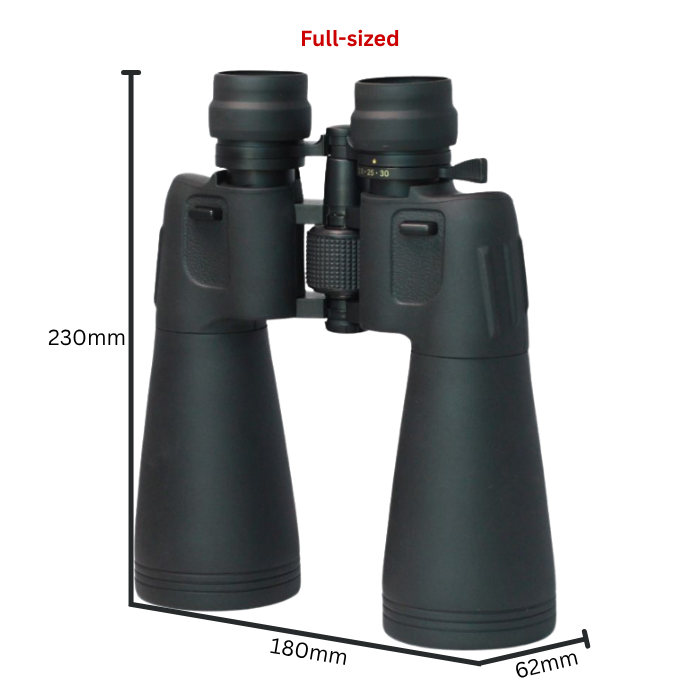
Focusing System
- Central Focus Wheel: Adjusts both barrels simultaneously.
- Dioptre Adjustment: Compensates for differences between your eyes.
- The Dioptre can be in a range of locations depending on the binoculars, such as in the eye piece or integrated into the central focus wheel.
- Fixed-focus / Focus-free: Provides instant clarity at most distances.
Considerations: Speed, precision, suitability for fast-moving subjects.
- Tip: When focusing binoculars to your preferences for the first time, adjust the Central Focus Wheel for your left eye only, then for your right eye adjust the Dioptre Adjustment. This will give you the clearest image, and after doing so you will only need to adjust the Central Focus Wheel!
Optical Coatings
- Fully Multi-Coated: Multiple anti-reflective layers on all lenses and prisms, maximizing brightness, contrast, and color accuracy.
- Partially or Single-Coated: Reduced performance, lower cost.
Impact: Image brightness, color fidelity, glare reduction, especially important for roof prism binoculars.
Weatherproofing and Durability
- Sealed and nitrogen-purged models prevent fogging and moisture damage.
- Rubber armor provides grip and shock resistance.
Factors: Reliability in rain, marine, or humid environments; durability during outdoor activities.
Choosing the Right Binoculars for Your Activity
- Travel / Casual Use: Compact or standard models for light weight and portability.
- Birdwatching / Wildlife: Mid-sized, wide FOV, good low-light performance.
- Sports / Events: Fast focusing, moderate magnification, wide FOV.
- Hunting / Rugged Outdoor Use: Waterproof, high contrast, durable; tripod for high magnification optional. Our range can be found here.
- Astronomy / Long-Distance Observation: High magnification, large objective lenses, tripod for stability, optimal coatings for faint objects. Our range can be found here.
Making a Decision
- Consider your main activity, lighting conditions, and portability needs.
- Compact and standard binoculars suit travellers and casual users.
- Outdoor enthusiasts benefit from waterproof, rugged designs.
- Birdwatchers and sports fans may prefer zoom or focus-free binoculars.
- High-powered binoculars with tripod support offer the best detail for long-range or astronomical observation.
- For any further inquiries, information, or guidance on selecting your binoculars, please contact us at (03 9687 7750) or visit our contact page here.
saxon binoculars are designed for clarity, comfort, and durability, helping you enjoy every view with confidence.

